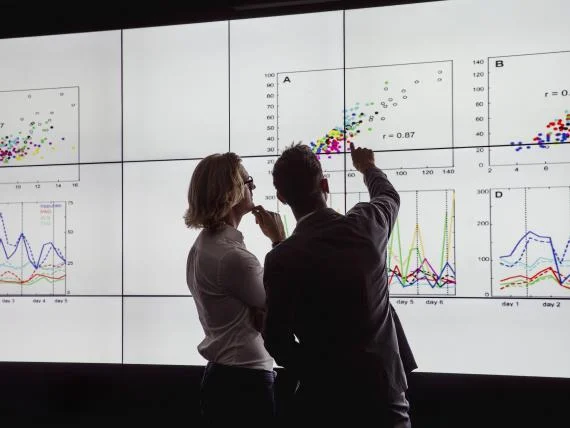


Businesses are collecting and using more data than ever before, presenting a valuable opportunity to use this in an innovative way to improve health and safety performance as the world of work changes. The key to dealing with this wealth of information is to understand it and turn it to your advantage, gaining insight into the working lives of your people and your social and physical environment.
In this free webinar, a panel of Health and Safety Executive experts and collaborators present how new data and analytical techniques can provide insights to help to reduce injuries and fatalities from workplace activity. They also talk through how this could be applied to your workplace and answer questions submitted by delegates. If you missed the live event, you can now register to access the on-demand content for free.
| Data-driven Insights Webinar: Discover new data solutions from HSE that help you solve your health and safety challenges. Dr Helen Balmforth, Discovering Safety Programme Director and Health and Safety Executive Head of Data Analytics will chair this hour-long webinar and introduce us to the health and safety data challenge and our panellists. | |
| Steve Naylor, Senior Scientist at Health and Safety Executive will share some tips on how organisations can collect health and safety data, store it, use it effectively to monitor risk, with the goal to eventually being able to predict risk and mitigate it. | |
| Dr Helen Balmforth will introduce Discovering Safety: a programme of work that aims to use data and analytical techniques to provide new insights and approaches to help to reduce injuries and fatalities from workplace activity. There are key projects within the programme that the panellists will share with you: | |
| Ran Merkazy, VP Product and Services Innovation at Lloyd’s Register Group – Severity Scanner | Severity Scanner is a tool that organisations can use as a machine-learning solution to RIDDOR incident reporting. Saving organisations time and resource as well as giving peace of mind on what incidents are RIDDOR reportable. Thousands of reports can be assessed in minutes with a 94% accuracy. |
| Tim Yates, Data Analyst at Health and Safety Executive – RIDDOR Text Analysis Tool | Forty UK construction workers lost their lives because of work-related harm in 2019 to 2020. That’s on top of an estimated 61,000 cases of non-fatal injury and 81,000 work-related ill-health cases (new or long-standing). As its name suggests, the RIDDOR Text Analysis Tool is based on the accident reports submitted to HSE under the Reporting of Injuries, Diseases and Dangerous Occurrences Regulations (RIDDOR) 2013. It uses natural language processing and machine learning to allow semantic searching on accident and incident textual data. |
| Steve Naylor – Leading Indicators | Imagine if you could not just monitor incidents but predict them and prevent them using data – saving your organisation money and keeping your workforce healthy and safe. Leading indicators are measures linked to the proactive, preventative things we can do to keep people safe. These can include things such as providing protective clothing to less obvious ones such as promoting healthy lifestyles and looking after mental health. |
| Matt Clay, Principal Engineer at Health and Safety Executive – Loss of Containment | Across the process industries, a key focus is on maintaining primary containment. Primary containment refers to keeping flammable and toxic materials inside plant items such as vessels, tanks and pipework. Loss of primary containment can result in fires, explosions and toxic releases as was the case in the Buncefield explosion in 2005. We investigate and record a wide range of LoC incidents and events together with their causation and circumstances to provide the process industry with better intelligence with which to improve standards. |
| Gordon Crick, Health and Safety Inspector at Health and Safety Executive – Construction Risk Library | A new tool for the Construction sector which integrates health and safety information into Building Information Modelling (BIM) tools, giving access to information on the best ways to mitigate risks in the design and planning phase of construction. |
| Dr Helen Balmforth Where you can find out more and how to get involved. | |
| Q&AYour chance to ask the experts and raise any queries you have around how data and analytical techniques can provide new insights and approaches which help to reduce injuries and fatalities from workplace activity. | |

Related Content
